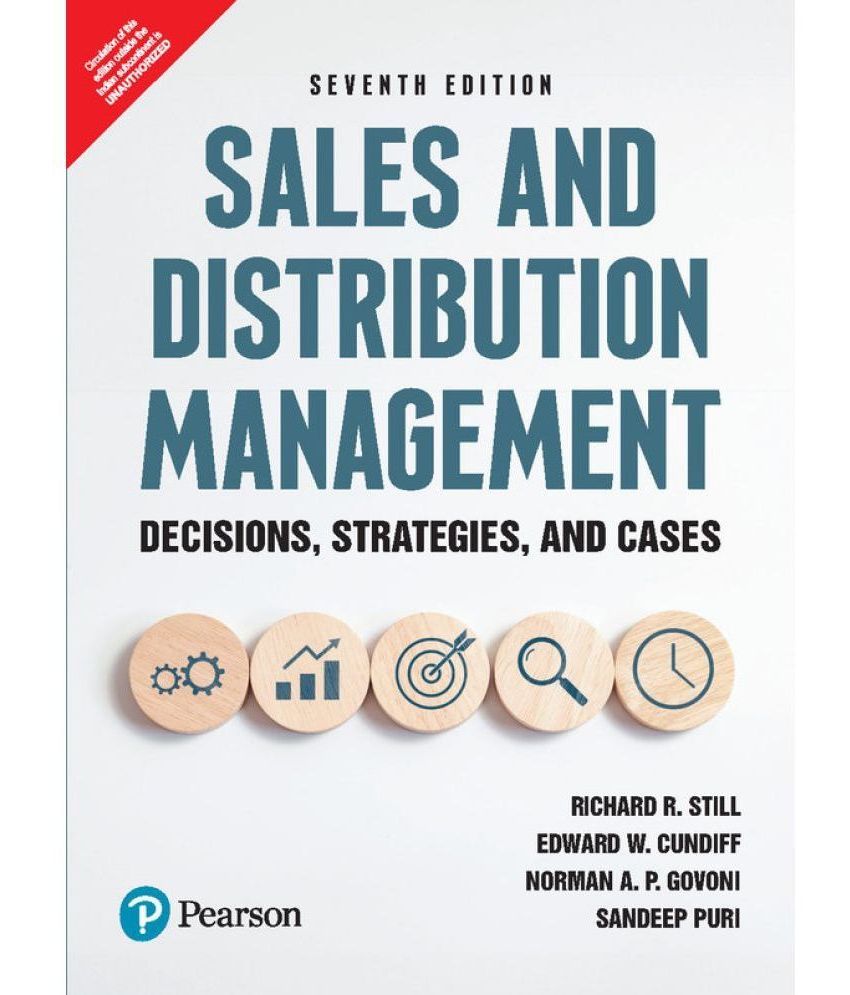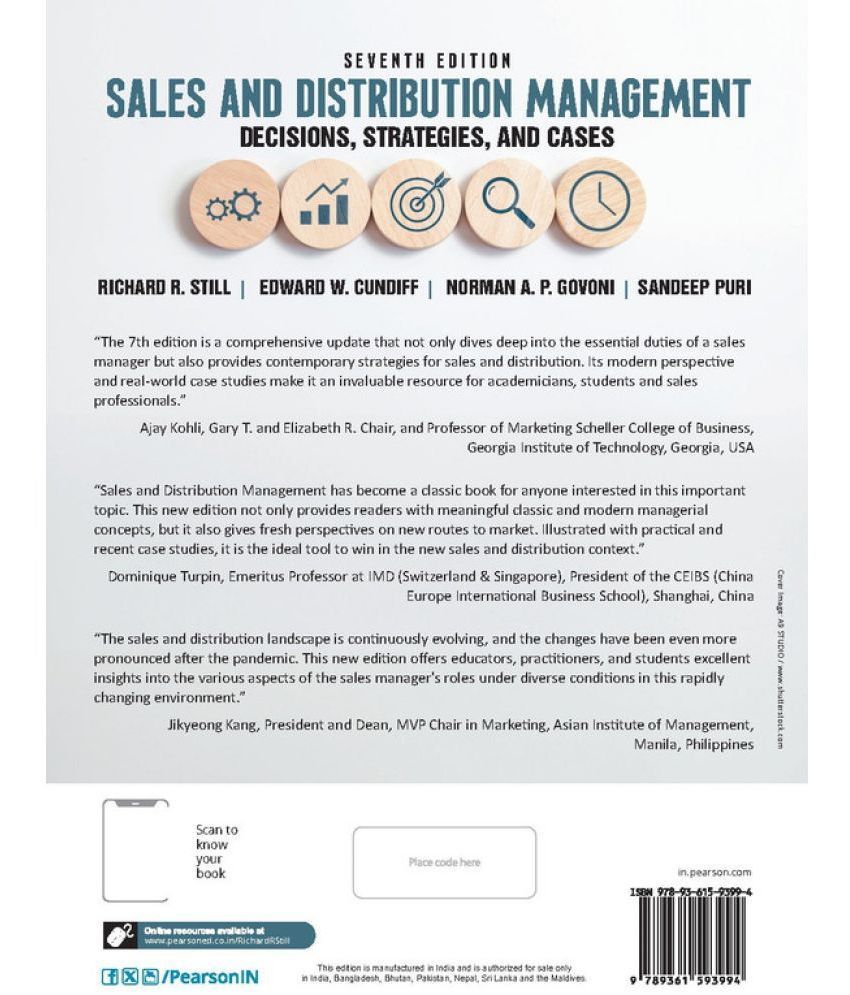The seventh edition of the book builds on the strengths of the sixth edition – which was aimed toward accomplishing three objectives –
1. To delineate the areas in which sales managers make decisions;
2. To analyze decision alternatives and criteria in these areas; and
3. To provide cases as real-world illustrations of decision situations.
These objectives will be accomplished if readers understand the sales manager’s functions in diverse circumstances.
This edition focuses on post-pandemic sales and distribution management. The main perspective is that of the sales executive as a participant in the marketing management team. Sales managers participate in and sometimes are primarily or jointly accountable for formulating strategies for the product line, pricing, physical distribution, marketing, and promotion. However, their focus and primary responsibility consist of managing sales personnel and maintaining relationships with key accounts and distributive organizations.
Features –
1. All chapters have been modified keeping the Indian perspective in mind.
2. Inclusion of recent data in cases and examples to support the text.
3. Addition of new text emphasizing topics such as prescriptive selling approach, usage of analytics in sales forecasting, qualities of effective salespersons from solution selling perspective, hiring through online platforms, changes in the logistics and supply chain industry post-pandemic, reverse logistics and a few other contemporary practices
4. Several new case studies have been added – Tech Always Corporation, Ramta Enterprises, Shamita Company, Sayantini Cosmetics, Sapphire Paints Limited, etc.
About the Author -
Richard R. Still Florida International University,
Edward W. Cundiff University of Texas at Austin,
Norman A.P. Govoni Babson College,
Sandeep Puri Asian Institute of Management, Philippines
Book Contents –
Part I: Personal Selling And Marketing Strategy –
1. Sales Management and the Business Enterprise 2. Sales Management, Personal Selling, and Salesmanship 3. Setting Personal-Selling Objectives 4. Determining Sales-Related Marketing Policies 5. Formulating Personal-Selling Strategy Cases for Part I
Part II: Organizing The Sales Effort –
6. The Effective Sales Executive 7. The Sales Organization 8. Sales Department Relations Cases for Part II
Part III: Sales Force Management –
9. Sales Personnel Management 10. Recruitment and Selection 11. Sales Training 12. Motivating Sales Personnel 13. Compensating Sales Personnel 14. Managing Expenses of Sales Personnel 15. Sales Meetings and Sales Contests 16. Controlling Sales Personnel: Evaluating and Supervising Cases for Part III
Part IV: Controlling The Sales Effort –
17. The Sales Budget 18. Targets and Sales Management 19. Sales Territories 20. Sales Control and Cost Analysis Cases for Part IV
Part V: Distribution Management –
21. Marketing 22. Managing the Partners 23. Information Systems 24. Logistics and Supply Chain Management 25. International Sales and Management Cases for Part V


